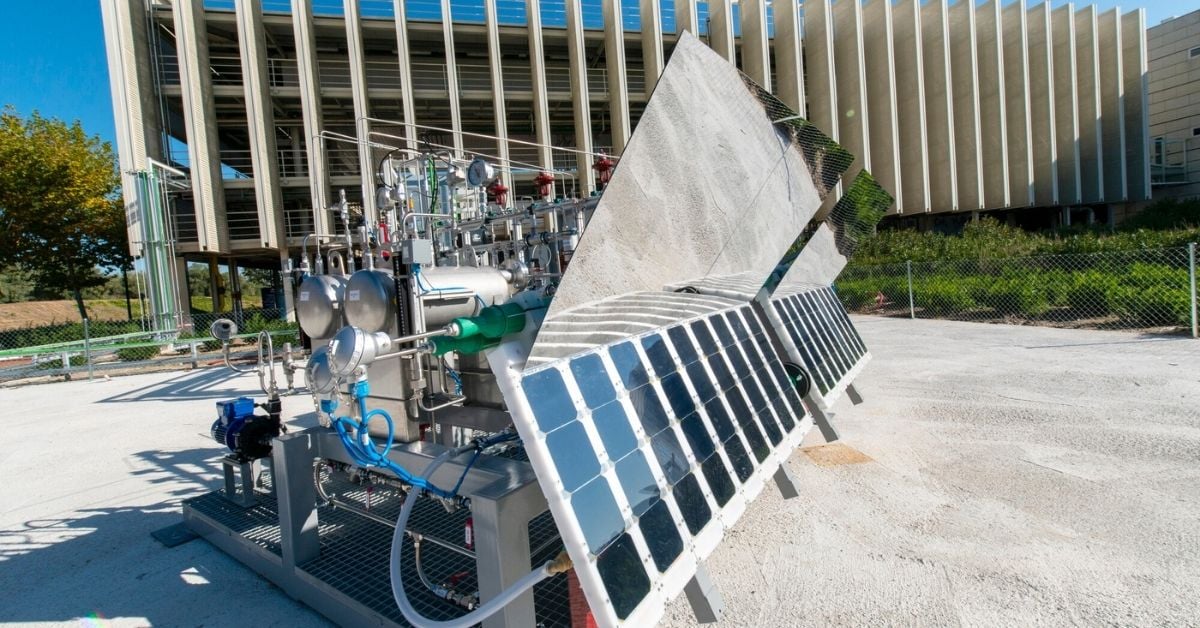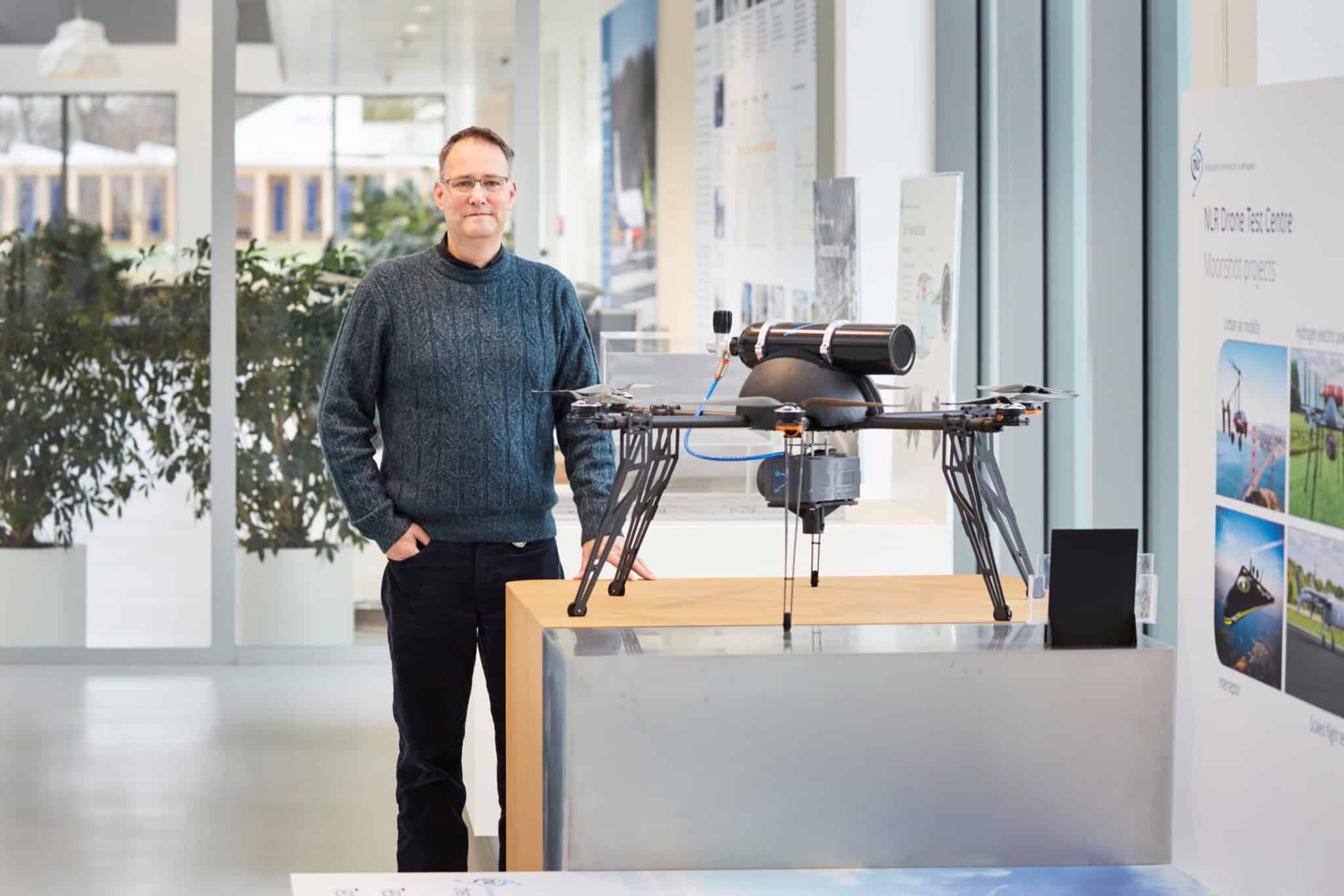
After almost a decade of work, a joint team of researchers from the Spanish energy companies Repsol and Enagas has developed a technology for the production of renewable hydrogen directly from solar energy, through a process known as photoeletrocatalysis (PEC). Photoelectrocatalysis uses only water and solar energy to produce renewable hydrogen.
The next step will be the construction of a demo plant in Repsol’s Puertollano industrial complex, with the aim of reaching commercial maturity before 2030. Research on the photoelectrocatalysis technology started at the Repsol Technology Lab in 2012.
We asked María Dolores Hernández, Senior Scientist at the Repsol Technology Lab for more details.
PEC is seen as a very disruptive technology. Can you describe more in depth why?
The photo electrocatalysis is so disruptive because is a technology that allows the direct conversion of solar energy into chemical energy – hydrogen – without the need of any other external energy source. This one-step process helps to improve the energy efficiency of the process compared to other alternatives. In addition, the process has no carbon emissions, as renewable energy and water are the elements needed to produce the renewable hydrogen.
Can you say what the positive results are of the pilot plant at Repsol’s research lab which led to the decision to scale it up to a demo plant?

The pilot plant scale has been able to confirm the expected performance parameters of this breakthrough technology that were previously achieved on a lab scale. With these achievements, all the lessons learned have been gathered so that they can be used in the next phase. This will also include a previous stage of optimization of the system prior to scaling up.
Producing hydrogen directly from solar power without the intermediate step of electrolysis has been the subject of research for years. Why is it so difficult to commercialize it?
In order to make this cutting-edge technology commercial, there are three fundamental terms that must be taken into account: efficiency, stability and costs. Getting two of them together is relatively easy, but it is necessary to achieve balance between all of them for the technology to be able to reach a commercial scale.
It has to be taken into account that any extensions when it comes to a photoelectrocatalytic hydrogen production plant will be substantial (as in solar plants) and, thus, also the associated capital expenditure. Our objective with this project is to scale up and accelerate it with the aim of reaching commercial maturity before 2030.
What are the chances that PEC technology will make a breakthrough in a sustainable society?
At Repsol, we believe that there is not a unique solution for the energy transition or to achieve a decarbonized economy. In our own objective to become a net zero emissions company by 2050, we need to apply all available technologies and let them compete to find the most efficient solution. Our aim is to provide efficient, affordable and sustainable energy to meet society’s needs. For all these reasons, we rely on energy-efficient, renewable energy production, but also on advanced biofuels, renewable hydrogen, a circular economy and/or synthetic fuels.
Hydrogen can be used as fuel in itself, as a raw material to produce advanced biofuels and synthetic fuels, but also to store renewable energy, providing stability and flexibility in the power grid.
What setbacks can you foresee in its development that it might not become commercially viable after all?
Competitiveness will be key for hydrogen deployment for industrial and domestic users and that is the objective of this pioneering technology.
In our opinion, our photoelectrocatalysis project is one of the most ambitious in terms of efficiency, stability and scale, taking costs into account at the same time. We are confident that a true commitment to the development of technology and by joining forces among the different actors across the value chain, we will be able to bring the technology up to a commercial scale. With this objective in mind, Repsol and Enagas intend to involve other partners on their joint venture to accelerate the roll-out.
How sustainable is PEC? It takes a step out of the process, but does that make the process climate neutral?
Photocatalytic production of hydrogen will contribute to reduce CO2 emissions since the process allows the direct conversion of solar energy into chemical energy in the form of hydrogen with no direct emissions. Renewable hydrogen, as an energy vector, will play a key role in the decarbonization of the economy.
On one hand, hydrogen will allow the management and storage of renewable energies on a large scale (due to its intermittency), acting as a channel to different sectors such as mobility or the residential and industrial use of heat and power. On the other hand, renewable hydrogen will replace those currently used in industry, thereby contributing to the reduction of carbon emissions.
How much will the EU’s Innovation Fund contribute to setting up the pilot plant?
This R&D project has been granted financial aid, managed by the Spanish Centre for the Development of Industrial Technology (CDTI) and co-funded by the European Regional Development Funds (FEDER). Furthermore, the pre-commercial plant at Puertollano has been selected for the EU’s Innovation Fund.
Earlier this year Repsol commissed a charging station built from discarded battery packs







